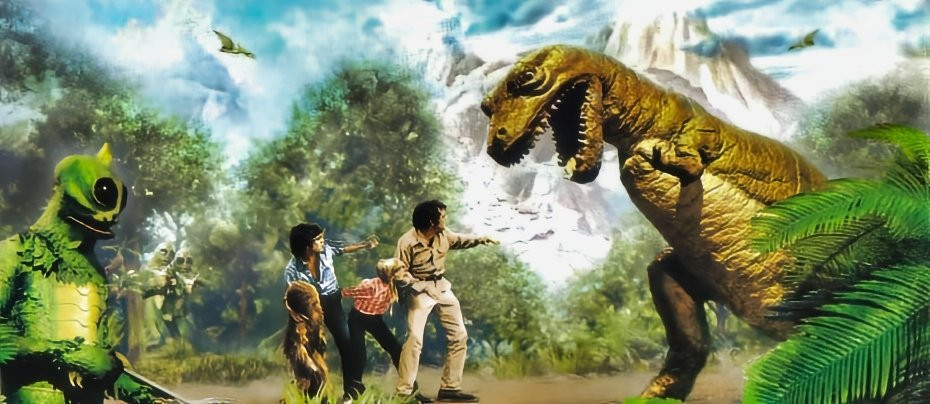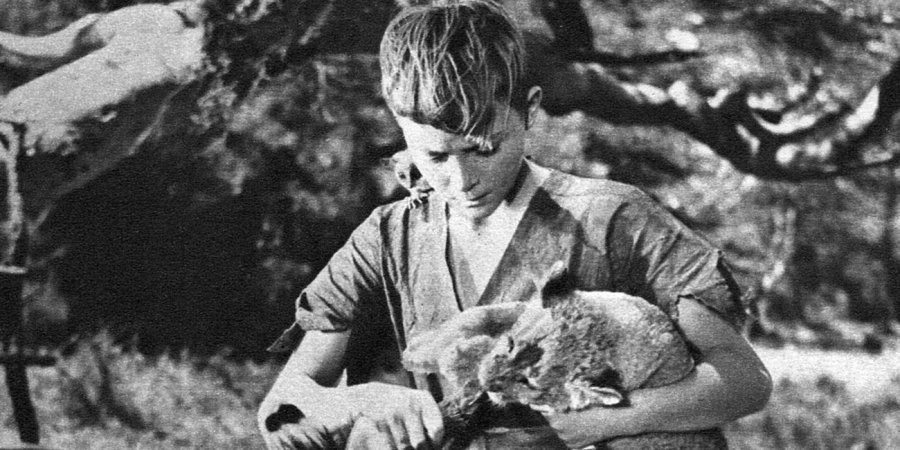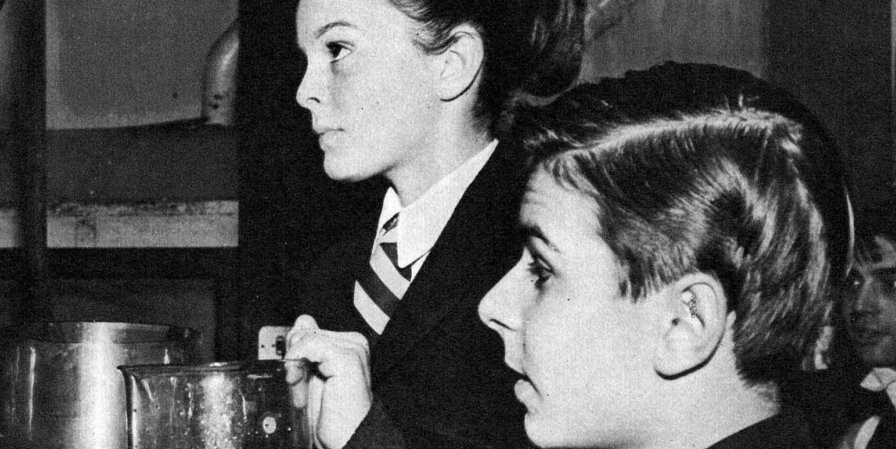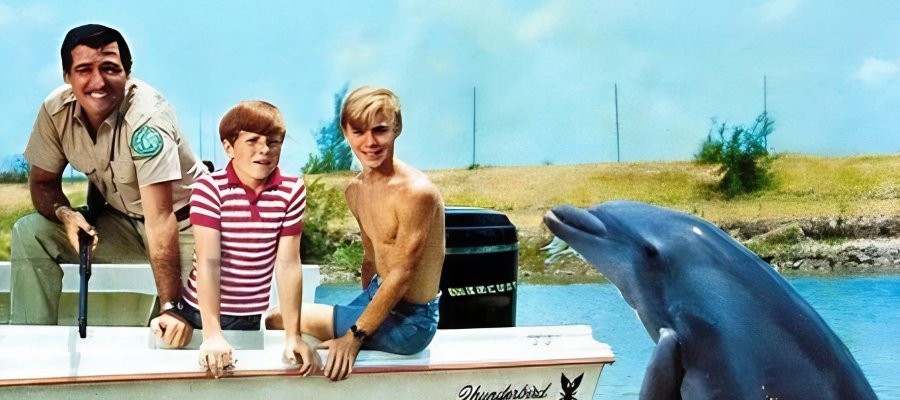
Land of the Lost
1974 - United StatesAmerican children's adventure series created (although originally uncredited) by David Gerrold, a US science fiction writer who had previously written the Star Trek episode The Trouble with Tribbles, and then developed by Sid and Marty Krofft who had also enjoyed television success by designing sets for The Banana Splits and H.R. Pufnstuf.
Land of the Lost is a classic example of children's science fiction that manages to leave a lasting impression with its imaginative setting, despite its campy special effects and simplistic storylines. The series follows the adventures of the Marshall family—father Rick (Spencer Milligan), son Will (Wesley Eure), and daughter Holly (Kathy Coleman)—who are transported to a mysterious prehistoric world after a routine rafting trip goes awry.
The world the Marshalls find themselves in is a vibrant and dangerous place, populated by dinosaurs (their chief nemesis being a Tyrannosaurus Rex they nickname "Grumpy"), primitive humanoids called Pakuni, the menacing Sleestak-reptilian creatures with a mysterious and sinister presence, and a variety of dangerous creatures. Despite the obvious limitations of 1970s special effects, the show's creators ingeniously used stop-motion animation for the dinosaurs whilst nonhuman characters were portrayed by actors in latex rubber suits or heavy creature makeup and other creative techniques were employed to bring this world to life, providing a sense of wonder and adventure that captivated young audiences.
The characters themselves, while not deeply complex, are likable and relatable. Rick Marshall is the quintessential resourceful father, always trying to keep his children safe and find a way back home. Will and Holly, on the other hand, provide a dynamic sibling duo, often finding themselves in precarious situations that require quick thinking and bravery. The chemistry between the cast members helps ground the fantastical elements of the show in a sense of reality and human emotion, making the family's plight more engaging.
The scripts, probably due to the influence of noted SF writers such as Gerrold, Larry Niven, Theodore Sturgeon, Ben Bova, and D.C. Fontana, often delve into speculative concepts and explore intriguing sci-fi ideas, from time loops to alternate dimensions, which adds depth to the otherwise straightforward adventure narrative. These elements make Land of the Lost more than just a children's show; it becomes a platform for introducing young viewers to broader speculative fiction themes.
Of course, the special effects, though creative for their time, can come across as dated and unconvincing to modern audiences (and were often used over and over again). The acting, while earnest, occasionally dips into melodrama, and the dialogue sometimes feels stilted. The non-episodic nature of the show means that many plotlines are introduced and resolved within a single episode, which can detract from the overall sense of narrative progression.
Despite these minor shortcomings, Land of the Lost remains a fondly remembered series, particularly for those who grew up watching it. The show's ability to spark the imagination and its commitment to storytelling over spectacle make it a memorable entry in the annals of children's television. Despite a relatively short run, the show continued to be aired extensively through syndication. Based on that success, a remake of the series began in 1991 and ran for two seasons. In 2009, a feature film was released, which parodied the original series for adult audiences.
It may be rough around the edges, but its heart and ingenuity make Land of the Lost a classic worth revisiting. For fans of vintage American sci-fi and adventure, it offers a nostalgic trip back to a time when television dared to dream big, even with a modest budget.
Seen this show? How do you rate it?
Seen this show? How do you rate it?
Published on June 20th, 2024. Written by Skip Wilson Jr. for Television Heaven.










